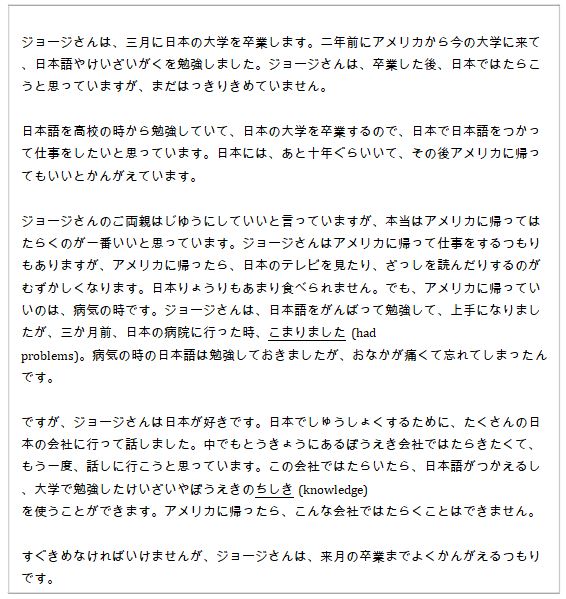???????????????????????? Answer the following question in Japanese.

??????????????
You might also like to view...
In paragraph 1, the best paraphrase for the last sentence is:
1. A poison is any substance that can harm the body, sometimes seriously enough to create a medical emergency. In the United States, there are more than a million reported cases of poisoning annually. Although some of these result from murder or suicide attempts, most are accidental and involve young children. These incidents usually involve common substances such as medications, petroleum products, cosmetics, and pesticides. In fact, a surprisingly large percentage of chemicals in everyday use contain substances that are poisonous if misused. 2. We usually think of a poison as some kind of liquid or solid chemical that has been ingested by the poisoning victim. Although this is often the case, many living organisms are capable of producing a toxin, a substance that is poisonous to humans. For example, some mushrooms and other common plants can be poisonous if eaten. These include some varieties of house plants, including the rubber plant and certain parts of holiday plants such as mistletoe and holly berries. In addition, bacterial contaminants in food may produce toxins, some of which can cause deadly diseases (such as botulism). 3. A great number of substances can be considered poisonous, with different people reacting differently to various poisons. As odd as it may seem, what may be a dangerous poison for one person may have little effect on another. For most poisonous substances, the reaction is far more serious in the ill, the very young, and the elderly. 4. Poisons can be classified into four types, according to how they enter the body: • Ingested poisons (poisons that are swallowed) can include many common household and industrial chemicals, medications, improperly prepared or stored foods, plant materials, and agricultural products made specially to control weeds, pests, and crop diseases. • Inhaled poisons (poisons that are breathed in) take the form of gases, vapors, and sprays. Again, many of these substances are in common use in the home, industry, and agriculture. Such poisons include carbon monoxide (from car exhaust, wood- burning stoves, and furnaces), ammonia, chlorine, insect sprays, and the gases produced from volatile liquid chemicals. • Absorbed poisons (poisons taken into the body through unbroken skin) may or may not damage the skin. Many are corrosives or irritants that will injure the skin and then be slowly absorbed into body tissues and the bloodstream; others are absorbed into the bloodstream without injuring the skin. Examples of these poisons include insecticides, agricultural chemicals, plant materials, and certain forms of marine life. • Injected poisons (poisons inserted through the skin) enter the body through a means that penetrates the skin. The most common injected poisons include illicit drugs injected with a needle and venoms injected by snake fangs or insect stingers. a. A large percentage of chemicals contain substances that are poisonous if misused. b. Many common chemicals include substances that are poisonous if used incorrectly. c. In fact, many chemicals contain substances that are poisonous. d. People would be surprised to know that most everyday chemicals are made up of poisonous substances.
Select the letter of the correct order for each set of details or sentences
Rice Krispies treats are a quick and easy snack to make. (1) _____ When the margarine or butter has melted, add a 10-ounce package of marshmallows and stir until they are completely melted. (2) _____ Spread and press the coated cereal into a 13x9x2-inch pan coated with cooking spray, and, after it cools, cut it into two-inch squares. (3) _____ Begin by melting three tablespoons of margarine or butter in a saucepan over low heat. (4) _____ Remove the melted margarine/marshmallow mixture from the heat and stir in six cups of Rice Krispies cereal. A) 2, 4, 1, 3 B) 4, 3, 1, 2 C) 1, 2, 4, 3 D) 3, 1, 4, 2
El menú.You have just started working as a waiter in a restaurant in La Paz and you have to know the menu very well. Organize each item from the list into its corresponding category. ? bistec guisantes langosta limonada manzana naranja pollo asado salmón té helado zanahorias Vegetales:
Fill in the blank(s) with the appropriate word(s).
The following sentence is correct: As John discussed supply-side economics with
his dog, he considered the possible effects of consuming wild mushrooms. Indicate whether the statement is true or false